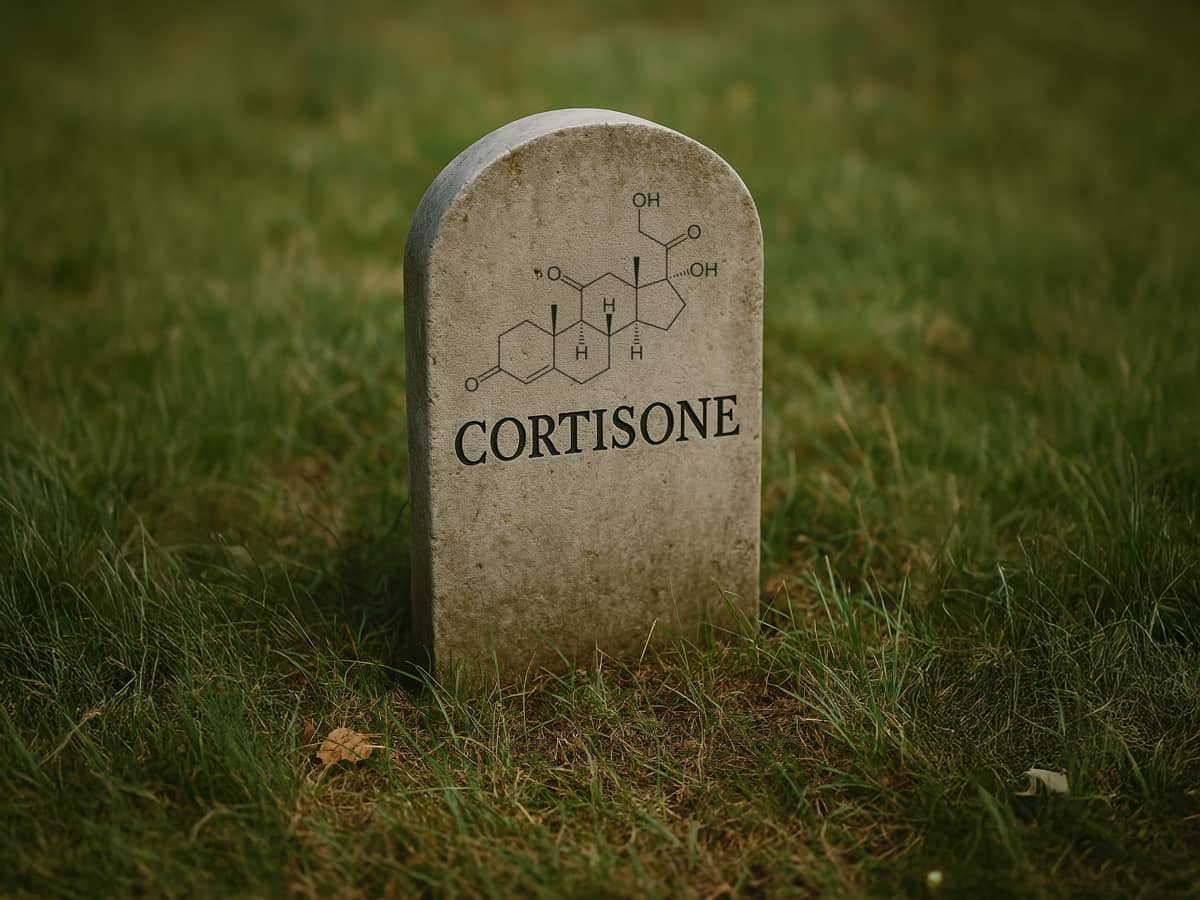Another Death Knell for Cortisone
Since their invention in 1948, corticosteroids (including cortisone) have been widely used for their anti-inflammatory properties. But the many problems with these drugs outweigh the benefits. Here is why.

Cortisone acts primarily by shutting down cell metabolism. This can work in inflamed joints, as the hyperactive cells no longer produce excess fluid. Swelling is reduced and the pain goes away.
Unfortunately, there is a linear correlation between doses of steroids administered and incidences of intra-articular bacterial, viral, and fungal infections. The more cortisone, the higher the risk — so much so that joint replacement surgical procedures are now often delayed at least a month after a cortisone injection.
There is also a link between cortisone and tendon rupture. Many an athlete have had a cortisone shot placed in their patellar or Achilles tendon and then suffered a tendon rupture. Some antibiotics, specifically fluoroquinolones (ciprofloxacin, levofloxacin), frequently used for urinary tract infections, also damage tendons and lead to high rupture rates.
Use of steroids in the acute setting of the emergency room is still relatively common, as emergency care is focused mainly on reducing immediate risk, with longer-term effects being secondary. Emergencies such as upper airway swelling in croup and angioedema, disc herniation with compression of nerve roots, acute bronchitis flares, and asthma exacerbation are common examples of presentations requiring powerful anti-inflammatory drugs — as are cases of steroid depletion or absence in adrenal crises or refractory shock. But even in an ER setting, the risks of using steroids can be life-altering. The high steroid doses needed in the emergent situation have an increased risk of bone death, immune suppression, and secondary infection.
Though it is important for emergency physicians to use what works quickly, this doesn’t mean we have to settle for a drug with so many risks. What if there were potent, targeted anti-inflammatories that didn’t open Pandora’s Box every time they were deployed?
Orthopaedic medicine entered the biologic tissue regeneration world in the 1990s with the rapidly expanding use of PRP and growth factors to stimulate cell metabolism and tissue healing — rather than shutting it down. In almost every instance of tissue injury and inflammation, these anabolic therapies are now replacing steroids. Weirdly, though, there are still many injections of steroids combined with growth factors or lubricants such as hyaluronic acid, even though the mechanisms of action are contradictory. It is unclear why this practice makes any scientific sense. There are instances where corticosteroids for musculoskeletal injuries do make sense, such as swollen bursas and irritated nerves, but we suspect even these areas will succumb soon to more targeted injections.
The arc of innovation in medicine is long. Almost everything we do can be made better. We are driven, curious, and excited about advancing the field to the point where we can not only restore injured and aging tissues but improve them, without adding increased risk and preferably making you better than you have been in years.
